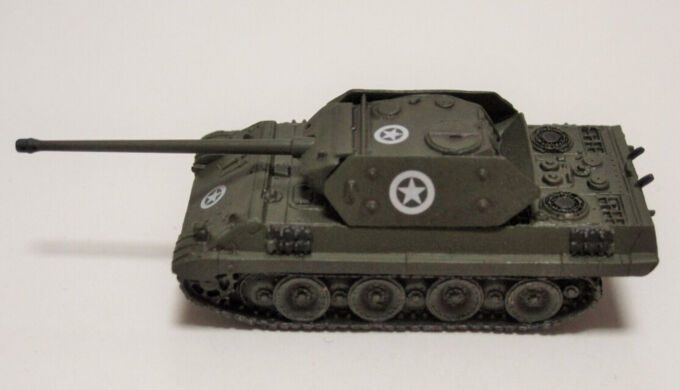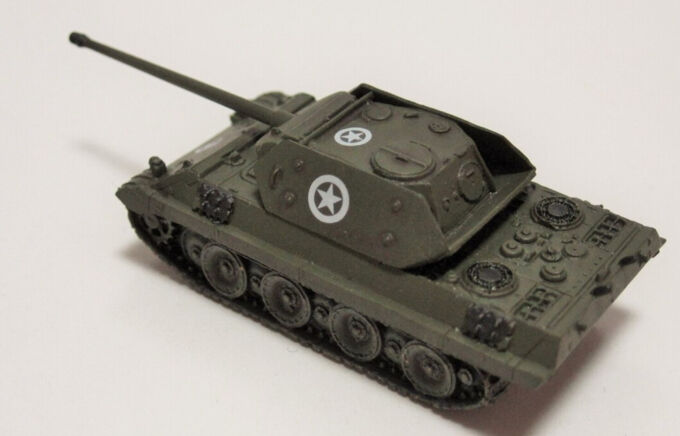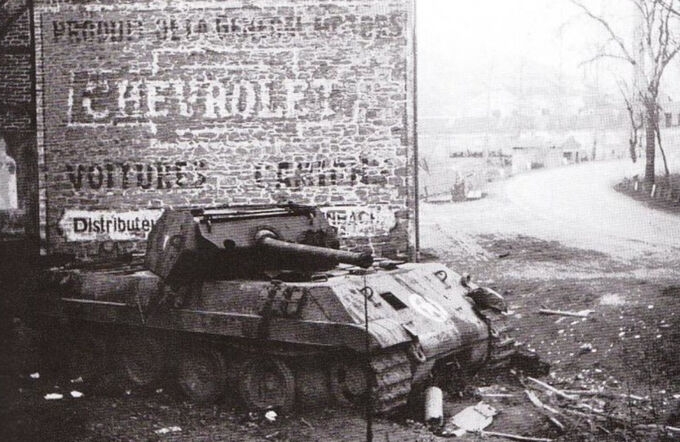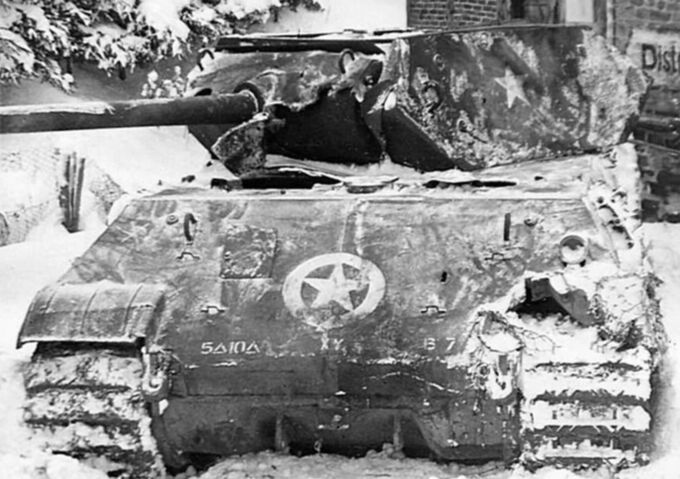The Ersatz M10 was an attempt during the Ardennes Offensive in 1944, with the help of Operation “Greif,” to break through the Allied lines and disrupt their supply lines, as well as to take over and occupy strategic points such as bridges in order to secure the advance of the German troops. For this purpose, five Panther Ausf. G tanks were converted with thin sheet metal to resemble the M10 Wolverine, thus deceiving the Allied soldiers.
The camouflage
The original Panther G commander’s cupola was completely removed and replaced with a simple, flat hatch to better mimic the low-profile silhouette of the M10. Several angled sheet metal plates were welded onto the turret to replicate its distinctive turret shape. Additionally, a sheet metal cover was added over the gun mantlet to mimic the Wolverine’s design and contours.
Sheet metal plates were also added to the sides of the Panther hull to conceal the Panther’s angular profile and create the illusion of the more rounded Sherman chassis. To further enhance the illusion, a large sheet metal cover was added over the entire front hull section, concealing the seam lines between the upper and lower hulls of the Panther.
The typical gentle curve of the frontal armor of the real Sherman chassis was also incorporated, making the camouflage more visible at longer distances. Furthermore, the front hull fairing was designed to conceal the Panther’s bow-mounted machine gun. This was replaced with a simple sliding flap mechanism that still allowed the bow machine gun to fire. The Panther’s rear was also covered with sheet metal to conceal the tank’s exhaust and engine covers. Additionally, two of the four exhausts were removed. Finally, they were painted in the typical US Army olive green and decorated with the typical white American star on the turret and hull.
The Ersatz M10 in Operation Greif
Operation Greif was planned to undermine and infiltrate Allied lines through deception. To achieve this goal, Panzer Brigade 150 was formed under the command of SS-Obersturmbandführer Otto Skorzeny. This brigade was to consist of German soldiers wearing US uniforms, speaking fluent English, and using American vehicles to carry out acts of sabotage and capture key bridges, such as those over the Meuse. The spare Ersatz M10s were used to deceive and mislead American units at road checkpoints and intersections.
Several of these vehicles accompanied German commandos on their advances into Allied territory. Despite some initial successes that caused confusion among US troops, the operation’s major success dwindled due to the delayed arrival of the SS Panzer Division; the key bridges could not be reached in time, and acts of sabotage largely failed to materialize. The elaborate camouflage of the Ersatz M10s also stood out. Because the Panther’s chassis was longer and the length of the 7.5 cm KwK 42 L/70 was too long for a Wolverine, and the Panther’s chassis was not to be confused with that of the Sherman, they quickly stood out.
Shortly after the start of the Ardennes offensive, they were deployed to Malmedy, where they participated in the battle for the city. They operated in conjunction with other German units of Panzerbrigade 150. Despite the optical camouflage, the Ersatz M10s had problems maintaining their deception from the start. Attentive American soldiers often noticed the oversized proportions, the long gun barrels (L/70 instead of the shorter 76 mm M7 of the M10 Wolverine), the German track suspension, and the typical engine noise of the Panther, which is why the American troops fired on them. Four of the five Ersatz M10s were destroyed by Allied artillery fire, and the remaining one was probably also destroyed later in the Ardennes offensive.







